Review: Orchestral Tools Time Micro
If you often find yourself looking for orchestral inspiration, this new package from Orchestral Tools may become your biggest saver of time and chronology.
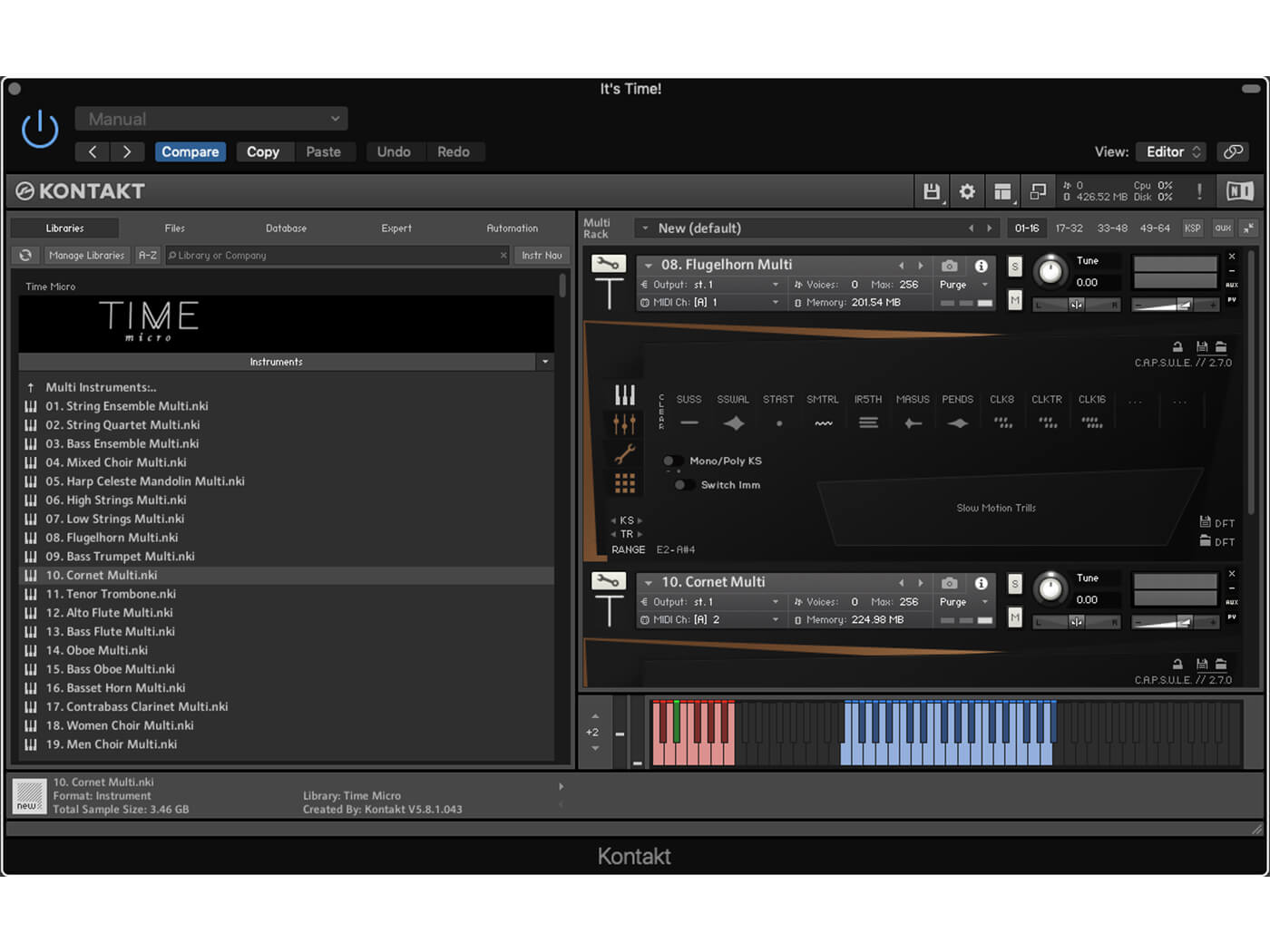

Price €349 + VAT
Contact Orchestral Tools
Regular users of orchestral libraries will often be confronted by conundrums. On the one hand, we might be trying to mix and match content to maintain an acoustic thread, but on the other, we also strive to find those libraries that might go outside of the normal multi-sample construct, and offer samples that will spark that creative flare. On both of these points, Orchestral Tools offer tremendous consistency. All of the company’s libraries are recorded at the iconic Teldex Soundstage in Berlin, with inspiration oozing from every patch. The company has scored superbly with its Metropolis Ark series, and latterly with the introduction of the Time series, where its first volume, Time Macro, offered various forms of tempo control over large-scale orchestral forces.
Time for chronology
This new addition in the Time series deals with slightly smaller forces, which OT has labelled Time Micro – cute! In fact, this slightly underplays expectation of forces, as it can sound considered in many places, but it is brimming with regular and exciting colour, making it quite unique.
Heading straight for the multi patches, two types of string grouping are presented: the String Ensemble is what might be regarded as chamber-sized, while the String Quartet reduces forces to the usual four-player construct. Both sound remarkably crisp and bright, and in keeping with some of the slightly esoteric bowing options – they sound beautifully contemporary.
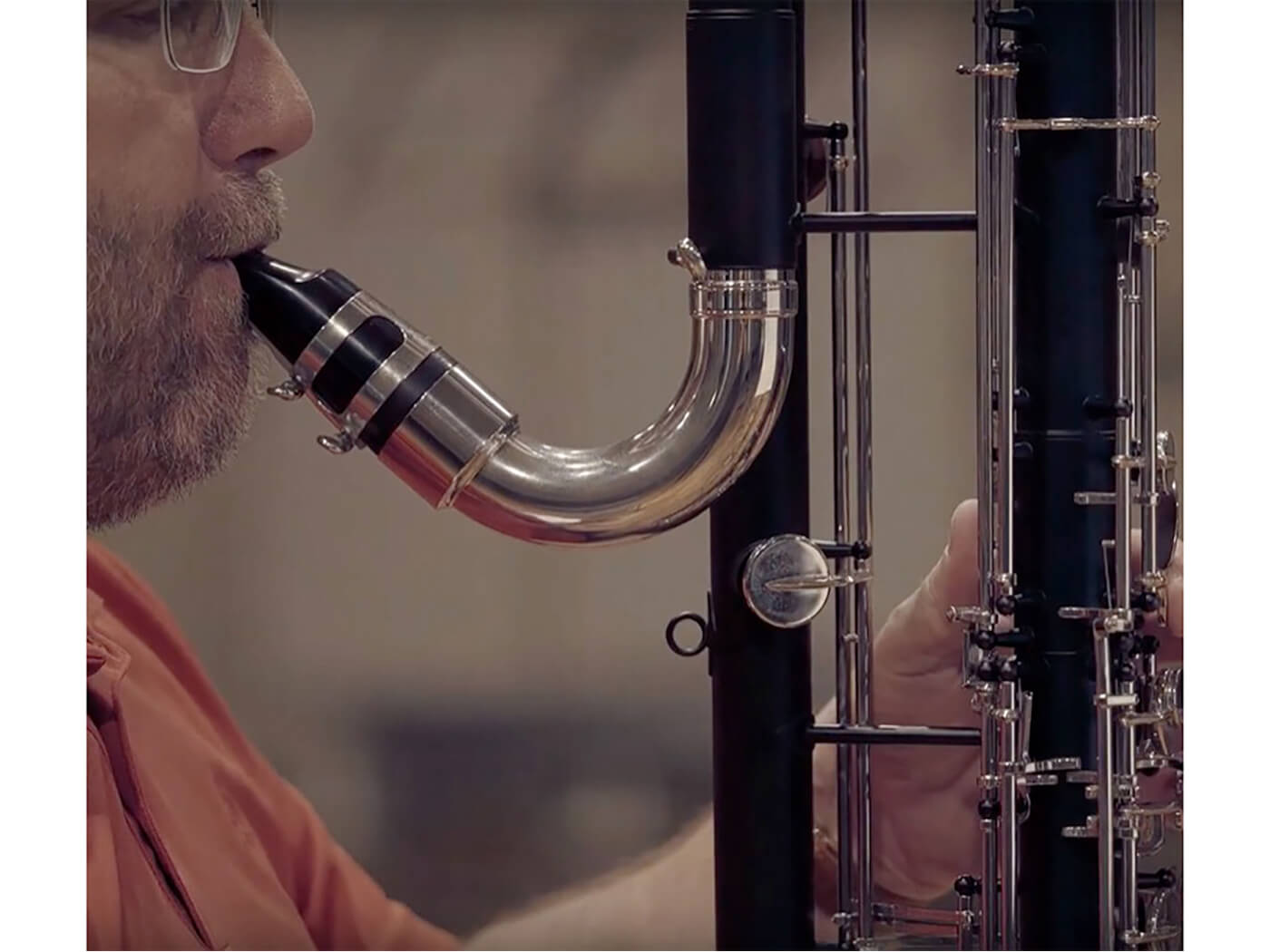
Looking closer at the mic-fader options on the mixer page, simplistic balancing of Close and Decca Tree sample capture offers enough scope to either exaggerate the sharpness, or dial it back for more ambient usage. Either way, the more considered timbral identity of this library is represented by a vast collection of articulations, with Sul Tasto and Sul Pont at the quieter end of the dynamic spectrum, with numerous other articulations best described as randomised or stuttered. The Random Vibrato is a good example, which increases in volume with the induced vibrato, sounding very different and unique. Being sampled acoustically in context, it still sounds entirely realistic, but completely otherworldly, while the Spiccato Stuttering is aggressive and randomised, firmly at the player level.
One thread which runs through the entire library is the Clockwork patching, which is all about repeated notes. Being played and sampled at source, they also sound totally realistic, providing subtle degrees of inaccuracy in the playing, which make it feel real, while not detracting from the tempo. In all cases, tempo locking to the DAW is the default, with the ability to defeat this option, as well as switch to triplet and half/double time tempo. The only issue in this setting is the inability to switch the note off accent in the repeated phrase, but for generic chugging, it’ll save eons of time.
The unsung heroes
OT has never been shy when it comes to employing more unusual instrumentation> While there is a small degree of representation from the more usual orchestral strongholds, further creation of colour is available through the inclusion of some great soundtrack favourites, such as the alto and bass flute, bass oboe, contrabass clarinet, bassett horn and bass trumpet. Where the strings are grouped together in ensembles and sections, it’s these additional instruments which act as a beautiful counterbalance against the norm of a string section.
The patching is equally enticing. If we take an example such as the alto flute, the breadth extends from the more usual soft sustains, through to a wealth of colourful interest. The Harmonic Glissando patch glides from one note to the next, in a controlled but somehow randomised way. Creating a cluster in this context is pure soundtrack fodder, as you can hear the flute fighting the player with each rise in harmonic. To a similar degree, the Irregular fifths articulation begins with unison movement, but quickly breaks into a frenzy between each note, which when organised in a chordal or cluster formation is incredibly effective.
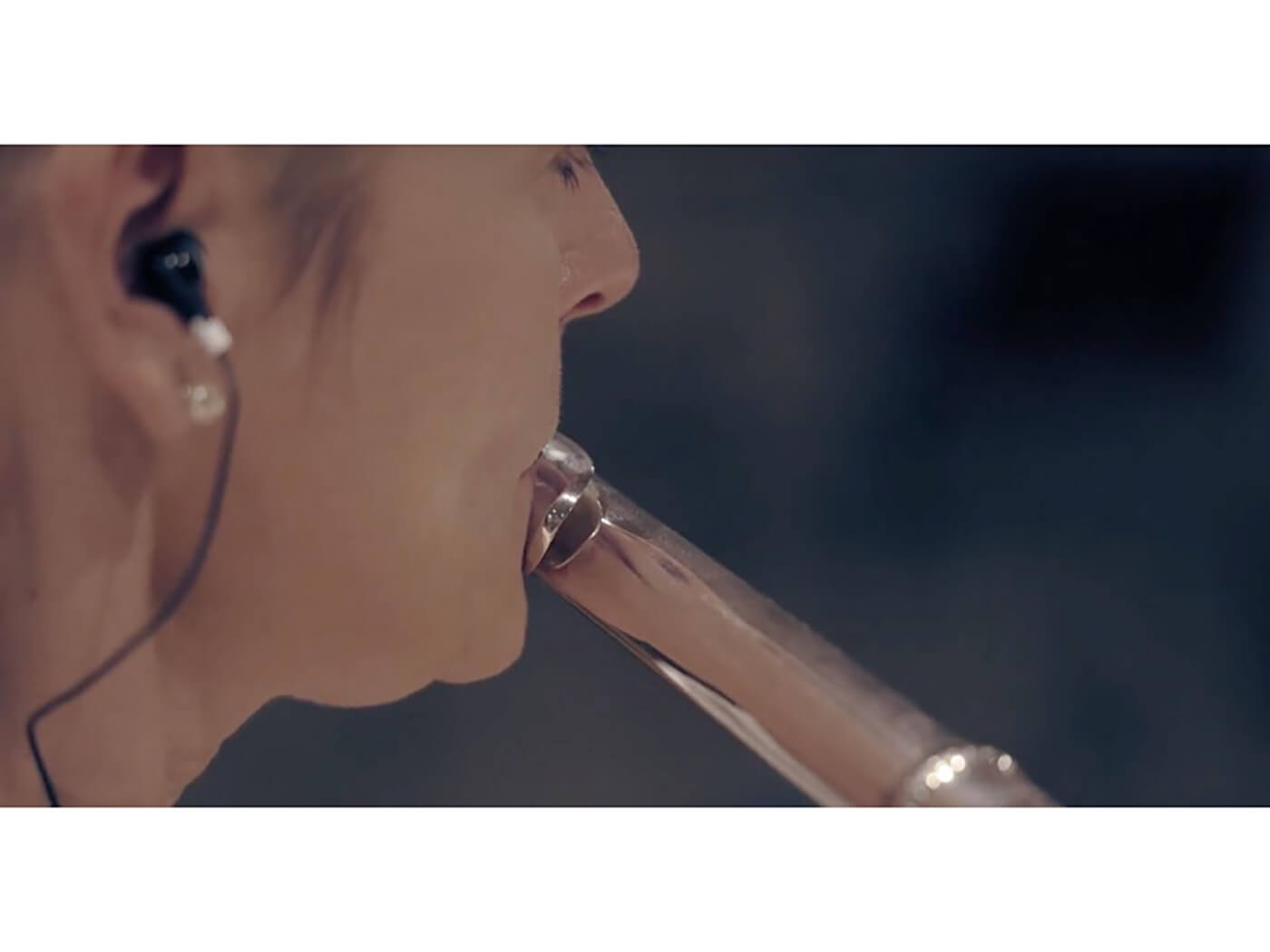
Another articulation which is liberally applied across the patching is the Pendulum swell, which does exactly what one might expect. While in most cases this is quite straight-laced, with equal timing of crescendo, it’s the Alto Flute that again garners my interest with induced flutter-tonguing. There’s an immediate hark back to 60s cop films and horror flicks alike. Hence, I feel that it’s a point to be hammered home that this library is full of slightly unexpected colours which are pretty consistent through the instrumentation list, while offering some genuinely-beautiful surprises that seemingly inspire.
However, if we turn back to the acoustic colour of the library, it feels very upfront and personal across the board. I find this to be very welcome, as it allows for much greater control when it comes to the production, and is befitting of the place where this library will reside as a toolbox – it is brimming with great source content, ripe for experimentation, or padding out existing stems.
Chronology gets stretched
Time Micro offers several other facets, not least of all with a sizeable amount of control over the construction of multi-articulation patching and respective settings and behaviour. There is, however, yet another section which is full to the very top of the Kontakt pot with inspirational content.
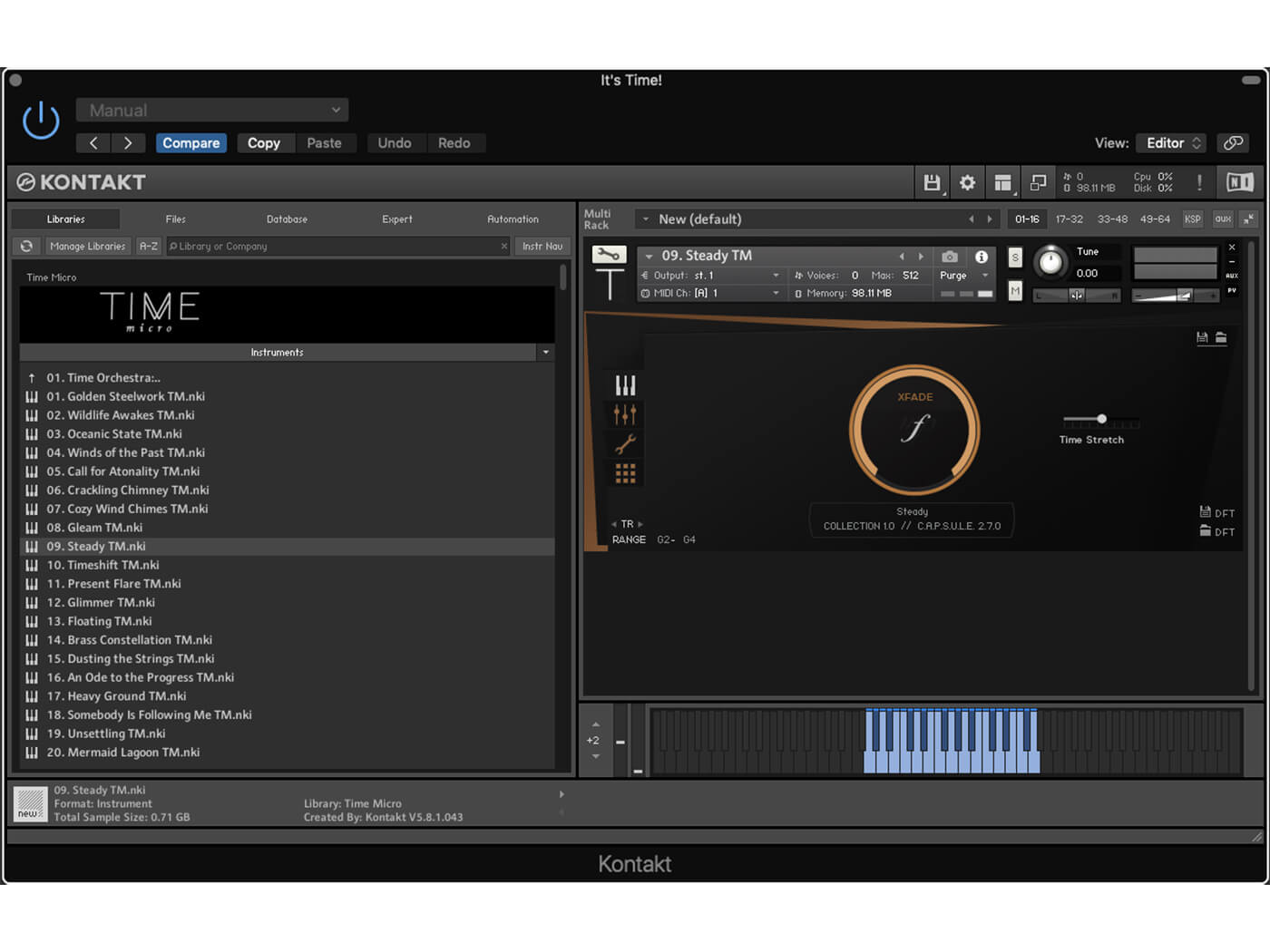
The TM Patches are subcategorised into instrument levels, offering pre-built section constructs, but with a Time Stretch facility, which in my view would be a parameter better labeled as ‘Sonic Pot of Gold!’ By reducing the timing fader, all sampled elements are reduced to a crawl, but without changing pitch, the net result being overtone and artefact heaven. The sound of a slowed brass articulation getting under way, or a string vibrato sounding so woozy, is the aural equivalent of the classic ultra-slo-mo video of a bird flapping its wings. Placing even a small element of this through compression and relentless reverb, or even better some form of granular effect, just opens up the most surprising and beguiling sounds, way beyond the orchestral norm.
Time’s up
This library has been the most pleasant of surprises to examine in such detail; I was expecting many forms of repeated notes and-the-like, and found myself presented with something which was more sonic Nirvana. As a library, it’s not so much at the traditional end of orchestral business, but as a product which is full of great content, much of which is truly inspired, while often using non-standard instrumentation and articulation, it is a real gem. Time Micro offers plenty of sustain patching, large amounts of irregularity through the random patching, and beautifully thought out uniformity through the Time-based patching, which adds up to a hefty and flexible sum of parts.
Do I really need this?
This library would be a perfect companion for more mainstream or conventional orchestral libraries, or as an excellent starting point for interesting acoustic colour or sound design. Its overall sonic makeup is more considered than other libraries, with an excellent sense of smaller forces that are recorded in a very personal way. It oozes character but offers less obvious choice of instrumentation, which is firmly a plus-point, as it feels and sounds quite different.
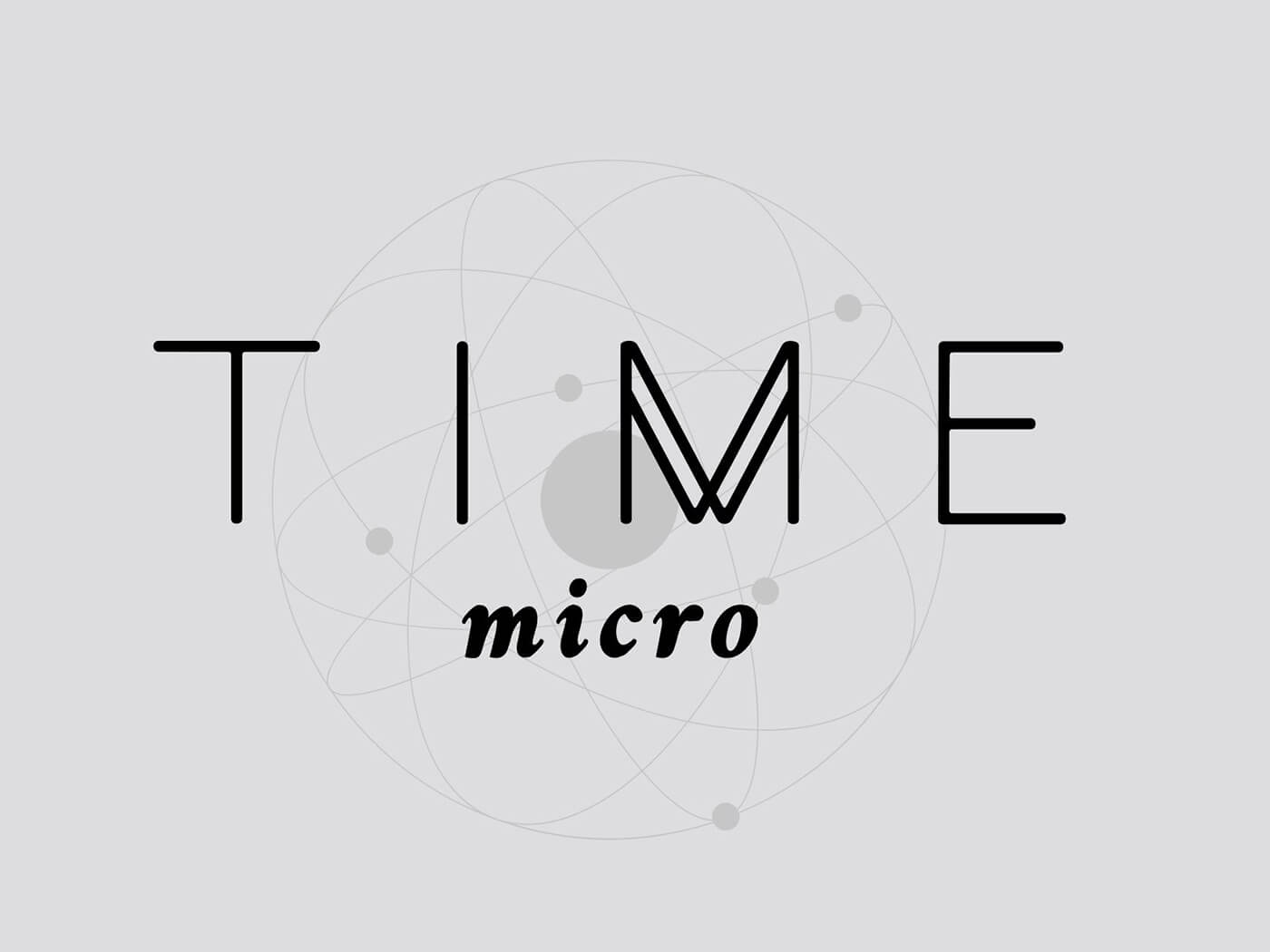
While the strings contained within offer a firm backbone and core, the slight difference in articulation choice found through the other instruments makes for plenty of variety, while the whole concept is bound together with a fantastic common thread. It’s perfect for soundtrack work, and for anyone who likes to experiment or explore the avant-garde, while there is also plenty that could be used in a more standard context.
Key features
- Extensive toolset for atmospheric and rhythmic underscoring
- Collated instruments from strings, wind and brass sections
- Traditional instrumentation alongside lesser used instruments
- Mixture of sustained and rhythmic textures
- Male and female vocal ensemble included
- Requires Kontakt (5.8.1 or later) or Kontakt player
- 100GB of samples (53GB NCW Compressed)
- 24bit/48Khz sample quality
Alternatives
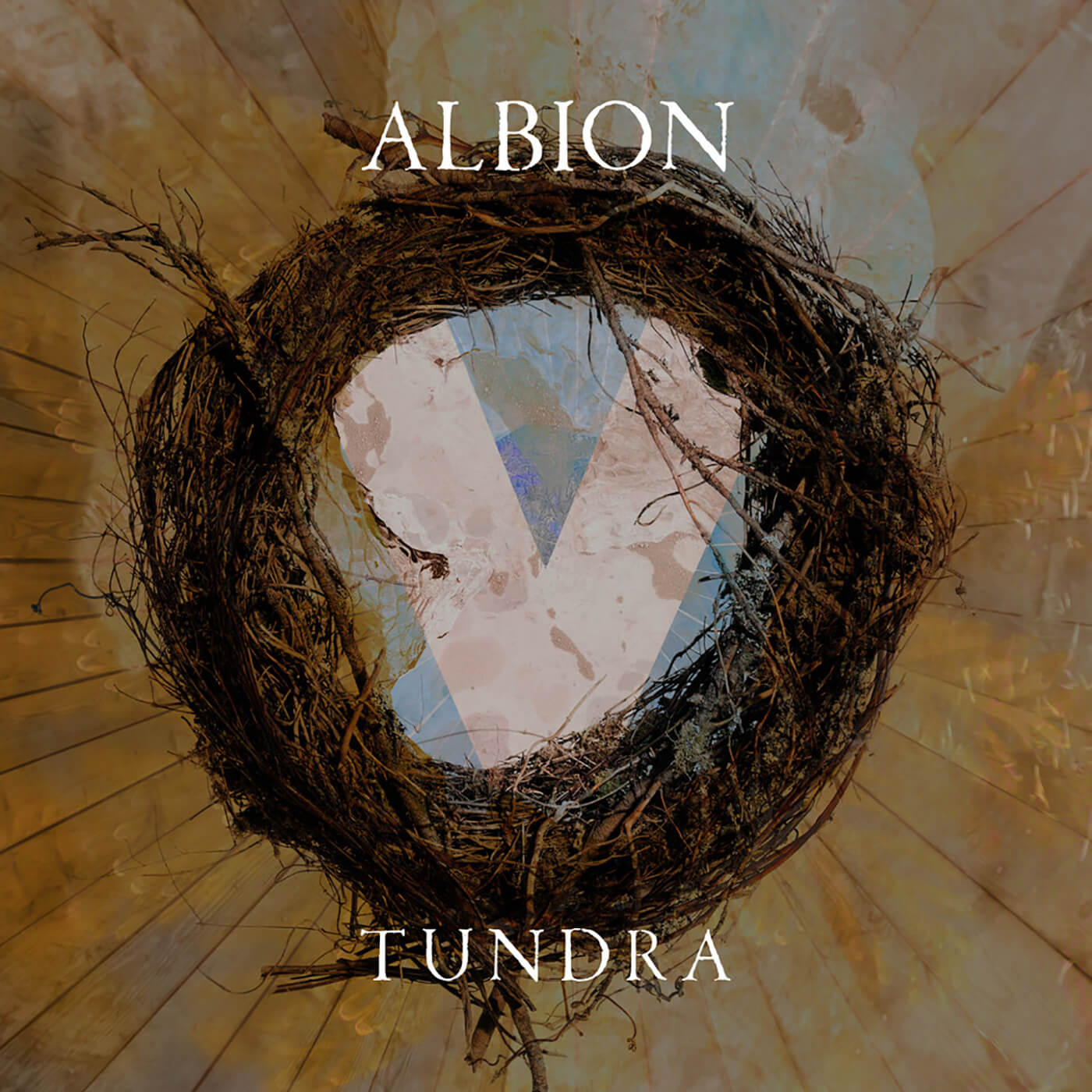
Spitfire Audio
Albion V: Tundra £399
With a firm nod towards the sound-scoring of Scandinavia, this samples a 100-piece orchestra alongside a warped synth section. It’s at the quieter end of the dynamic spectrum; as they say ‘At the edge of Silence’.
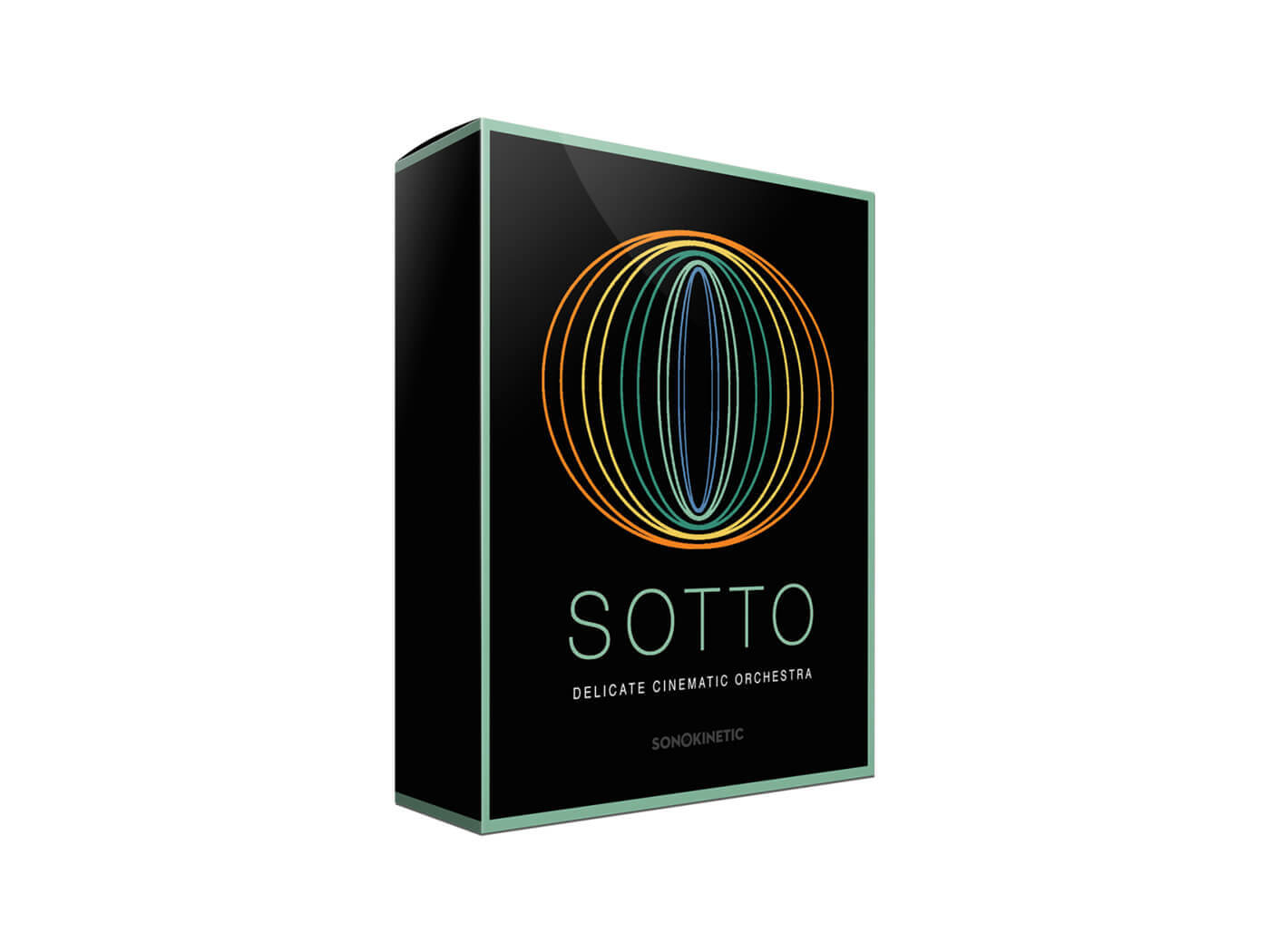
Sonokinetic
Sotto €249.90 +VAT
You will be dependent on the pre-recorded phrases within, but as the Italian names suggests, all samples are played with a lower dynamic marking in mind. Offers content right across the string, wind and brass sections.